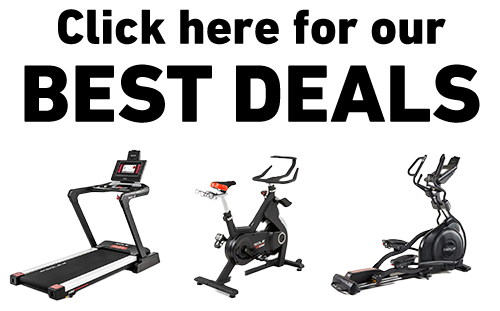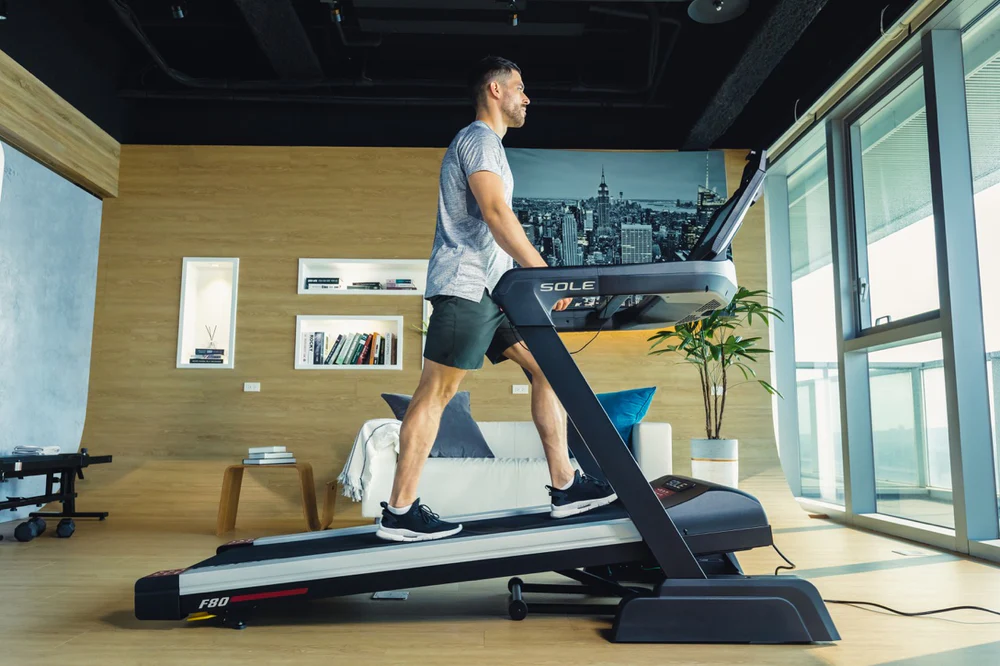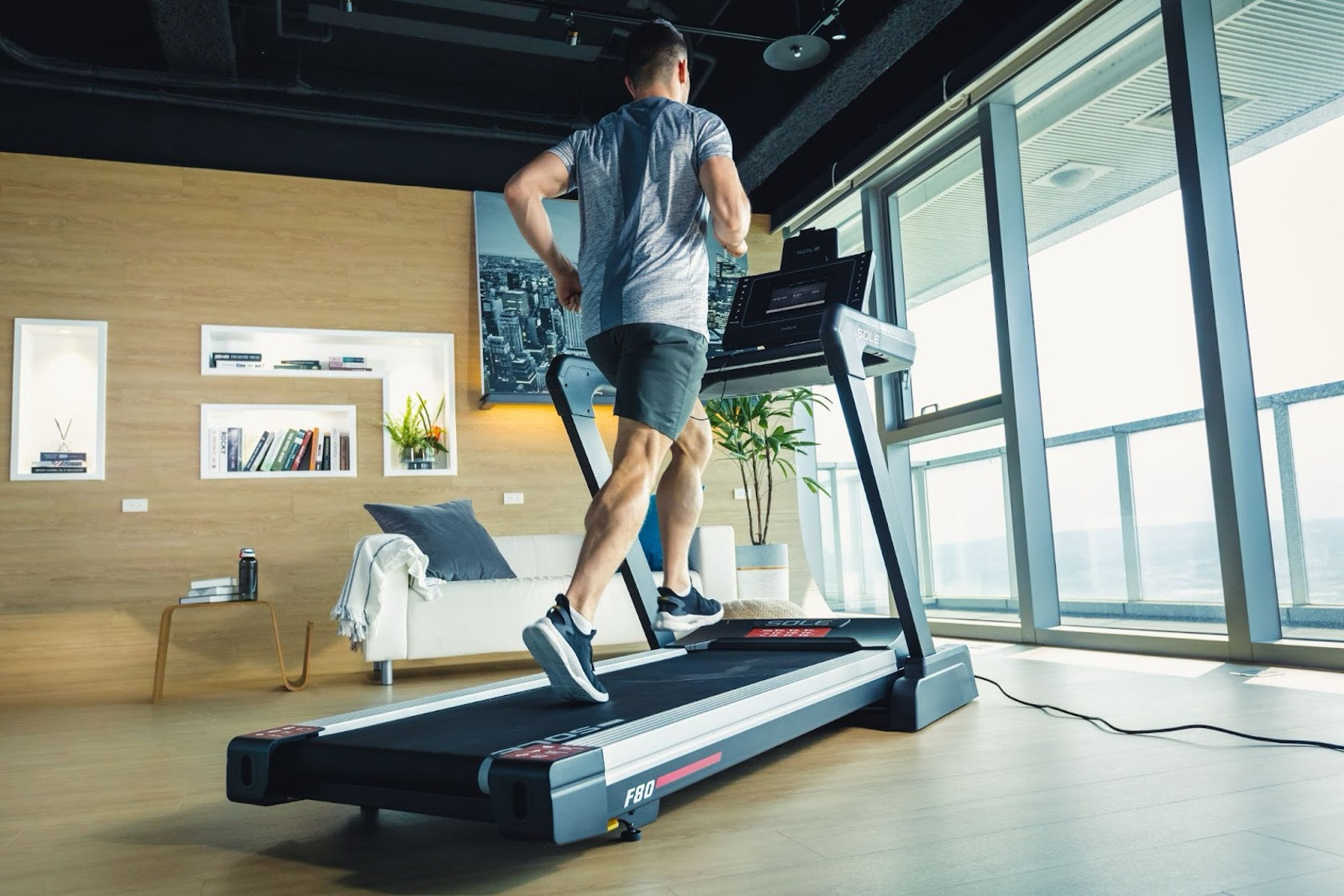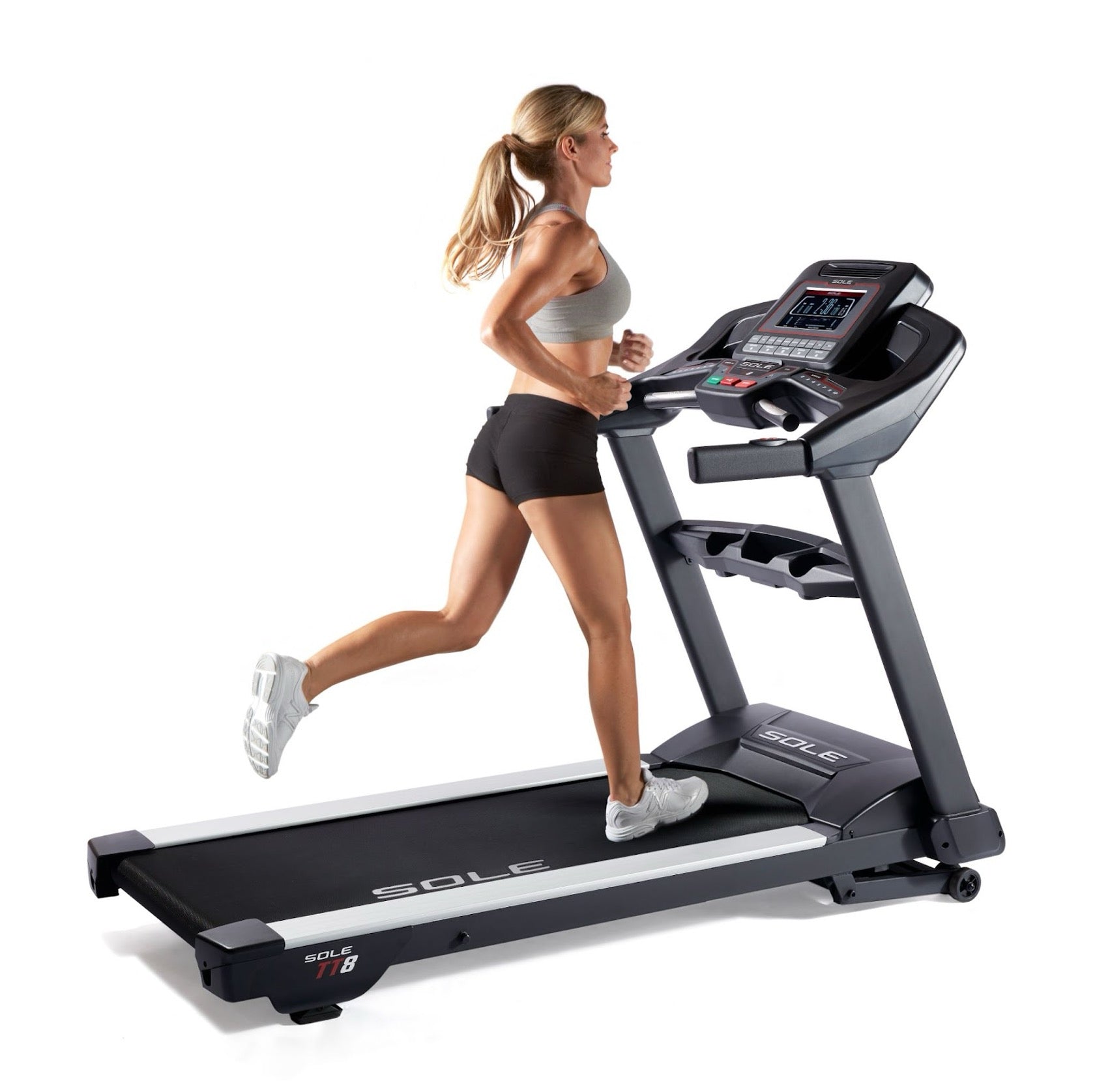Key Takeaways
- Incline walking on a treadmill effectively maximizes calorie burn, ideal for weight loss goals.
- Increasing the incline engages more muscle groups, particularly in the lower body and core, promoting strength development.
- Beginners should start with a moderate 3-5% incline to allow proper adaptation and prevent injury.
- Proper form and safety measures, including warm-ups and using handrails are essential for incline training.
- At SOLE, our treadmills help you lose weight and build strength with up to 15 incline levels and customizable program settings to suit your fitness goals.
Introduction to Incline Walking Workouts
It’s no brainer that incline walking is such a game-changer. By setting your treadmill to an incline, you’re simulating an uphill hike (without the scenic views and fresh air, of course).
Walking on an incline forces your body to work significantly harder than walking on a flat surface, which means you're burning more calories—great for weight loss.
Additionally, incline walking targets your glutes, calves, and hamstrings, helping to strengthen and tone these muscles over time. Your future self will thank you when you see the results!
|
At SOLE, we're proud to offer top-quality exercise equipment designed for home and gym use. Our machines are built to meet the highest standards of durability and performance, making them ideal for fitness enthusiasts at any level. SOLE Products
|
Fitness Benefits and Weight Loss Potential
Treadmill incline walking intervals offer the ideal mix of intensity and relief, helping you burn calories, build strength, and protect your back while enhancing core stability!
First off, the calorie burn is legit! Walking on an incline can increase the calories you torch by so much more compared to regular walking. That's because your body has to fight against gravity, which takes way more energy. So by adding incline to your routine, you can hit your weight loss goals faster without having to spend hours on the treadmill.
Incline walking also boosts your heart health. As your heart rate jumps with the intensity of the incline, your heart gets stronger and your endurance goes up. Over time, this can lead to better overall health and less chance of heart problems. Win-win!
How Incline Walking Builds Muscle Strength
Incline walking transforms ordinary cardio into a calorie-torching, muscle-building workout that boosts both endurance and strength simultaneously.
When walking uphill, your muscles, especially in the lower body, have to work harder, helping to tone and strengthen your butt, thighs, and calves.
Additionally, walking on an incline engages your core muscles as they help maintain your balance, giving you a full-body workout. It’s not just a leg workout—you’re also working your abs and lower back.
Picture yourself climbing a steep hill, feeling the burn in your legs as they push against the slope, while your core tightens to keep you steady.
That’s the power of incline walking, offering an effective full-body workout without complicated movements—just a simple, straightforward exercise that delivers results.
Setting Up for Success on Your Treadmill
Choosing the Right Speed and Incline
When you're just starting out, it's super important to pick the right speed and incline for your fitness level. If you're new to this incline walking thing, start with a moderate incline around 3-5%. This lets your body get used to the new movement without totally killing your muscles on day one.
As for speed, a brisk walking pace of 3-4 mph is usually perfect for beginners. This speed is fast enough to get your heart pumping but not so fast that you risk flying off the back of the treadmill. Remember, the goal is to challenge yourself, but not to the point where you're dying and never want to see a treadmill again!
Safety Tips for Effective Workouts
Safety should always be #1, especially when trying something new. Here are some tips to keep in mind:
- Warm up: Spend at least 5 minutes with a gentle walk before cranking up that incline.
- Use handrails: At higher inclines, grab those handrails so you don't wipe out and end up as a viral gym fail video.
- Stay hydrated: Keep water nearby so you don't shrivel up during your workout (dry mouth is the worst).
- Listen to your body: If something hurts (and not in the good workout way), dial it back.
Remember, incline walking is about progress, not perfection. Start slow, pay attention to your body's signals, and gradually turn up the intensity as you get more comfortable.
Sample Treadmill Incline Walking Workouts
Beginner-Friendly Workouts
If you're new to incline walking, starting with something simple is key. The goal here is to build your stamina and get your muscles used to this new challenge. Here's an easy routine to get you started:
- Warm-Up: Start with a 5-minute walk on a flat surface at 2.5 mph to get your blood flowing.
- Workout: Bump the incline to 3% and walk at 3 mph for 10 minutes. Focus on keeping a steady pace and not slouching.
- Cool Down: Drop the incline to 0% and walk slowly for 5 minutes to bring your heart rate back to normal.
Intermediate and Advanced Routines
Once you've mastered the basics, it's time to kick it up a notch with intermediate and advanced routines. These workouts will push your endurance and strength, helping you level up your fitness game.
- Intermediate Workout: Start with a 5-minute warm-up at a 1% incline and 3 mph. Then, alternate between a 5% incline for 3 minutes and a 2% incline for 2 minutes, staying at 3.5 mph. Repeat this cycle for 20 minutes.
- Advanced Workout: Warm up for 5 minutes at a 2% incline and 3 mph. Crank the incline to 8% and walk at 4 mph for 5 minutes. Then, drop to a 4% incline and walk at 3 mph for 2 minutes to catch your breath. Repeat this sequence three times for a total of 30 minutes of serious hill-climbing action.
Customizing Workouts for Personal Goals
Tweaking your treadmill routine to fit your goals—whether it's shedding pounds, building muscle, or boosting heart health—keeps things interesting and helps you stay on track.
- For weight loss, focus on keeping a higher incline with a moderate pace to burn more calories.
- If building muscle is your thing, go for steeper inclines with different speeds to work different muscle groups.
- For heart health, include intervals that get your heart rate up.
Remember, it's all about listening to your body and adjusting based on how you feel. Find what works for YOU and stick with it!
Maximizing Your Workout Experience
The Importance of Warm-Up and Cool-Down
A good warm-up gets blood flowing to your muscles, making injuries less likely. Cooling down helps gradually bring your heart rate back to normal and keeps you from feeling dizzy.
Tracking Progress for Motivation
Keeping tabs on your progress is an awesome way to stay motivated and see how far you've come. You can do this by keeping a workout journal, using fitness apps, or just noticing improvements in your endurance and strength.
By setting small, doable goals and celebrating when you crush them, you'll stay motivated to keep pushing forward.
Incorporating Interval Training for Better Results
Interval training is basically alternating between going hard and taking it easier to recover. This method is amazing for burning calories and improving heart health. For example, you can add intervals by cranking up the incline and speed for 1-2 minutes, then dropping back down to recover.
By adding intervals to your incline walking, you'll keep your workouts challenging and interesting. This approach boosts your results and keeps you engaged and motivated to keep at it.
Crush the Incline with SOLE Treadmills
Get ready to elevate your workout with SOLE treadmills! Incline walking is a powerful way to reach your fitness goals, and with SOLE’s adjustable incline levels, you can customize your workout to suit your needs.
With incline levels that go up to 15%, you can push yourself to new heights—literally. And for those looking to add even more variety to their routine, the F89 and TT8 models also feature a decline function, so you can mix in downhill walking for a more dynamic workout.
Our treadmills also come pre-programmed with a Hill program, which simulates running up and down hills, giving you a great alternative to incline walking and helping you work muscles from all angles.
The best part? You can tailor your workout with these features and gradually increase the intensity as your fitness improves. With SOLE treadmills, you have everything you need to take your incline walking to the next level!
Whether you want to lose weight, build strength, or improve your heart health, these treadmill incline walking workouts have something for everyone. So lace up those sneakers, hit the treadmill, and get ready to level up your fitness journey!
Check out our SOLE treadmills now!
Frequently Asked Questions (FAQs)
How often should I do incline walking workouts for weight loss?
For effective weight loss, try to include incline walking in your routine at least three to four times a week. This frequency lets your body adapt and improve while also giving you enough rest days to recover and not burn out completely.
When it comes to weight loss, you have to be consistent. Aim for 150 minutes of moderate aerobic activity or 75 minutes of vigorous activity each week, as recommended by the CDC.
Remember, how hard you go matters too. Mix up moderate and high-intensity sessions to burn more calories and keep your routine from getting stale.
What is the optimal incline level for beginners?
If you're new to incline walking, it's best to start with a gentle incline of 3-5%. This range gives you a manageable challenge without destroying your muscles or joints right off the bat.
As you get more comfortable, you can gradually crank up the incline to keep challenging your body and building those muscles.
It's super important to focus on maintaining good form throughout your workout, no matter what incline you're at:
- Keep your shoulders back and down
- Tighten your core for stability
- Look straight ahead, not down at your feet (even though it's tempting!)
Can I achieve muscle building just by incline walking?
While incline walking is mostly great for cardio fitness and weight loss, it can definitely help build muscle too, especially in your lower body.
The increased resistance from the incline works your butt, thighs, and calves, helping tone and strengthen them over time.
For more serious muscle gains, think about adding some strength training exercises alongside your incline walking routine.
How do I prevent injuries during treadmill workouts?
Preventing injuries is super important for keeping up a consistent workout routine. Here are some tips to help you stay safe:
- Warm up: Always start with a 5-10 minute warm-up to get your muscles ready.
- Wear good shoes: Get supportive shoes designed for walking or running to protect your feet and joints.
- Listen to your body: If something hurts (not in the good way), dial back the intensity or stop.
- Hydrate: Drink water before, during, and after to avoid dehydration.
SOLE treadmills feature industry-leading safety systems like emergency stop buttons and auto-stop technology that detects when you're no longer on the belt. Our wider running belts and stable frames minimize the risk of missteps too, while the shock-absorbing deck technology reduces impact on your joints.
Is it necessary to vary my routine over time?
Yes! Varying your routine is essential for continued progress and avoiding plateaus. Over time, your body gets used to the same workout, making it less effective.
By changing up inclines, speeds, and how long you go, you can keep your body challenged and engaged. This approach will prevent boredom and will help you improve.
Also, consider adding other types of exercise, like strength training or yoga, to complement your incline walking and boost your overall fitness even more.




Leave a comment
This site is protected by hCaptcha and the hCaptcha Privacy Policy and Terms of Service apply.